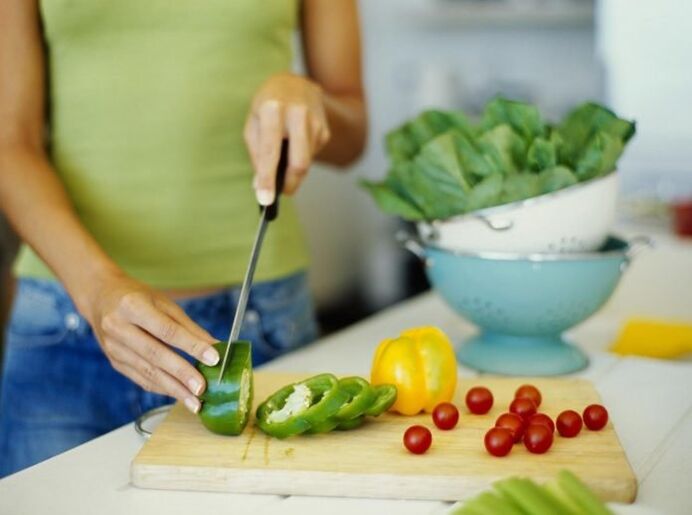
A hypoallergenic diet is recommended for all types of allergic reactions. The duration of such a therapeutic diet is determined by the stage of the allergic process.
The main goal of a hypoallergenic diet is to eliminate the cause of the disease, that is, to identify food products that lead to rashes and eliminate its harmful effects on the body.
The classic hypoallergenic diet

The classical diet is used during the period of manifestation of allergies. The duration of the general non -specific diet is from a few weeks to two months.
The classical hypoallergenic method is based on the rule of exclusion of products that are considered highly allergenic:
- citrus;
- dairy;
- fish;
- eggs;
- nuts;
- honey;
- cocoa, chocolate, coffee;
- honey;
- red, orange fruits and vegetables.
There is a list of foods that are allowed to be eaten as part of the diet during the period of manifestation of allergies. Among the ingredients allowed are a variety of green fruits, vegetables, gluten-free cereals, dairy products.
What is this?
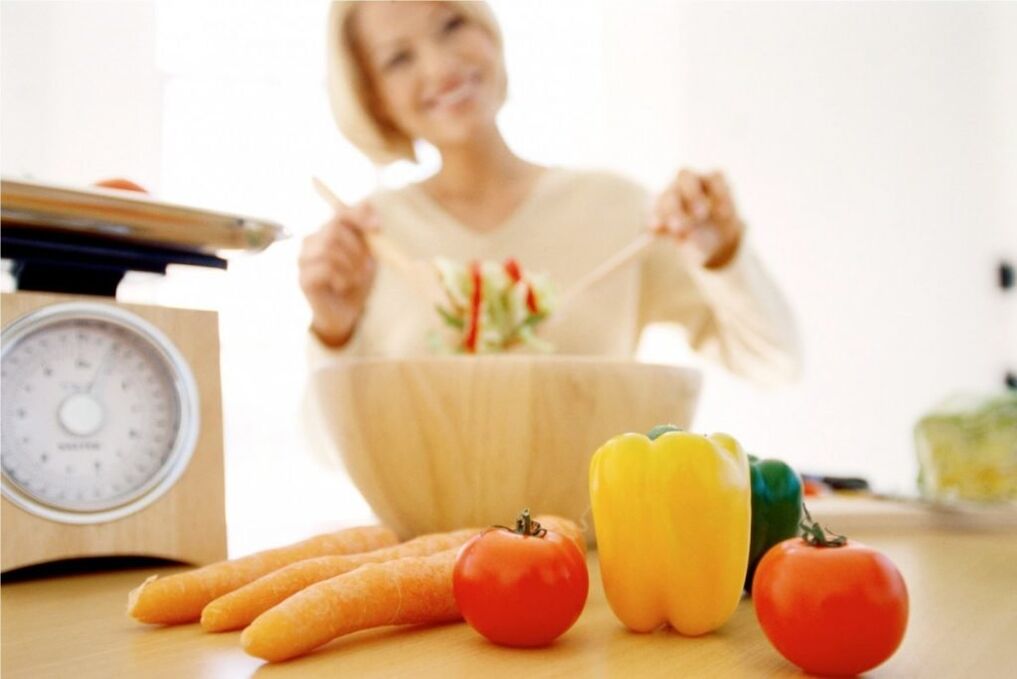
Using a hypoallergenic diet consists ofin the rejection of certain products that cause allergiesin humans. Allergies can be caused by ingredients in one or more foods.
It is necessary to release the product gradually. The hypoallergenic way of using this diet allows you to identify products that cause allergies.
If the cause of the allergy is a substance included in some foods, it is difficult to identify it through the use of special diets.
List of groceries
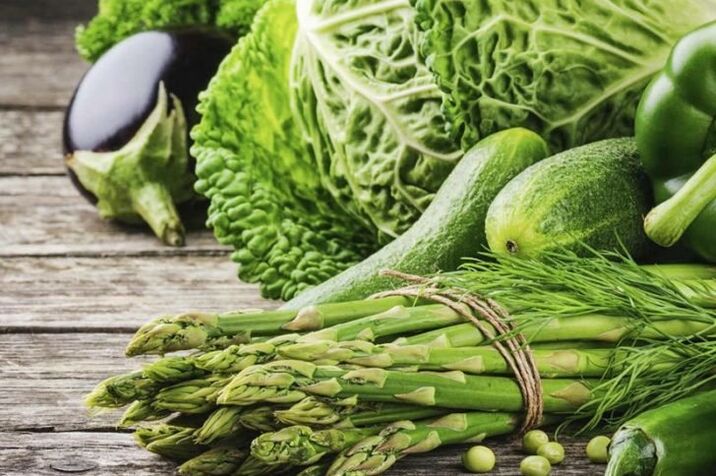
There is a classification of hypoallergenic products according to the level of reaction of the body. It applies to children and adults who suffer from allergic reactions.
List of foods for a hypoallergenic diet:
- products from the fermented milk group (kefir, fermented baked milk, cottage cheese);
- lean meats (chicken, beef);
- intestines can be incorporated into food (liver, tongue, kidneys);
- certain types of low -fat fish products (cod, sea bass);
- barley, semolina, rice, oat rolls are used in recipes from cereals;
- it is permissible to use sunflower, olive, butter;
- the list of vegetables in the diet consists of cucumbers, zucchini, rutabagas, squash, cabbage of various kinds); green salad, dill, parsley, spinach;
- from fruits and berries, green apples, pears, currants and white cherries, gooseberries can be included in the diet;
- dried fruits are represented by a list of apples, pears, prunes;
- The menu includes apple and pear compote, weak tea, mineral water.
Foods that can cause mild to moderate allergies are used in the diet as part of a hypoallergenic diet.
The gradual elimination of food helps to get rid of allergies, if the result is not achieved by the rejection of highly allergenic components in the menu:
- cereals (wheat, rye);
- room;
- corn porridge;
- pork, goat;
- from Bulgarian pepper vegetables, beans, potatoes;
- peaches, apricots, currants, cranberries, lingonberries, melons, bananas;
- infusions, herbal decoctions.
List of products that should not be used with hypoallergenic diets, which are excluded immediately when creating the menu:
- milk and whole milk products;
- cheese;
- eggs;
- fish caviar, fish, seafood;
- smoked, salted, citrus products;
- citrus, fruity, red, orange;
- from dried fruits: dried apricots, dates, raisins, figs;
- spices;
- from vegetables: tomatoes, red peppers, pumpkin, beets, eggplant, carrots, reddish-brown, celery;
- mushrooms;
- honey;
- nuts;
- candy with chocolate, caramel;
- juices, jellies, carbonated drinks;
- coffee, cocoa;
- products that contain food components that are not of vegetable origin.
If the rejection of a product belonging to one of the groups with moderate or high allergic reactions does not show results, you should see a doctor to identify the characteristics of the human body.
Diet and menu for this week
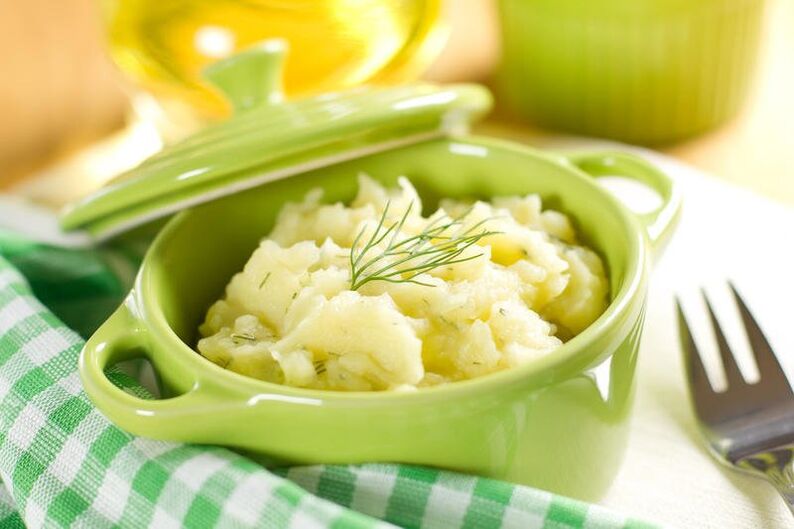
A list of foods that should not cause an allergic reaction helps create a week -long menu for a hypoallergenic diet. To make life easier during the dieting period, a pre-arranged menu, which contains a list of dishes for each day, helps.
In the sample menu for a week, the rules of hypoallergenic techniques are used, based on the use of products that do not cause allergies.
The hypoallergenic diet consists of the dishes presented on the menu for this week:
First day
- For breakfast, it is useful for children and adults to serve oatmeal with extra fruit, hypoallergenic rules allowed, tea.
- At lunch, the menu includes soup with cabbage, boiled beef fillets, apple jelly.
- Dinner porridge cooked in rice, steamed cut, kefir 0-1%.
The second day
- The first course is represented by a cheese sandwich, plain yogurt, tea.
- Lunch lean soup, compote.
- For dinner, the menu offers boiled potatoes, beef curry, fruits.
The third day
- Breakfast pasta, tea, fruit.
- For lunch, vegetable and meat soups, compotes are served.
- In the evening, you can eat boiled fish, fruit, drink tea.
forth day
- For breakfast, cornmeal porridge, fruit salad, tea.
- The lunch menu consists of borscht in soup cooked from vegetables, steamed cutlets and compote.
- For dinner you can serve porridge with meat, boiled vegetables, tea.
The fifth day
- Breakfast millet porridge, tea.
- At lunch, the menu offers vegetable and beef soups, fruits, kefir.
- In the evening, porridge with meat, vegetables, jelly.
the sixth day
- For breakfast you can eat a sandwich with boiled meat, fruit, tea.
- At lunch, meat soups, fruits, compotes are served.
- Dinner on the menu includes porridge, salad of chopped cabbage with herbs, kefir.
the seventh day
- The first course on the menu for children and adults consists of a casserole with cottage cheese or fresh cottage cheese with sour cream according to taste preferences, tea.
- For lunch, you can eat lean soup, steamed cutlets, compote.
- In the evening, the menu includes porridge, boiled meat, fruit, yogurt without additives.
To compile the menu, a general diet is used according to a hypoallergenic method called "table 5".
recipe
Hypoallergenic diet recipes
Baked Apple Recipe:

- green apple;
- 200g cottage cheese;
- sugar to taste.
Grind the apple pulp, remove the core first. The shape of the apple must be preserved. Mix with cottage cheese and sugar. Place the apple curd mixture in the apples left over after cutting the pulp and core. Bake in the oven at 180 degrees for 20 minutes.
For lunch, a recipe for a hypoallergenic soup that is good for health is ideal:
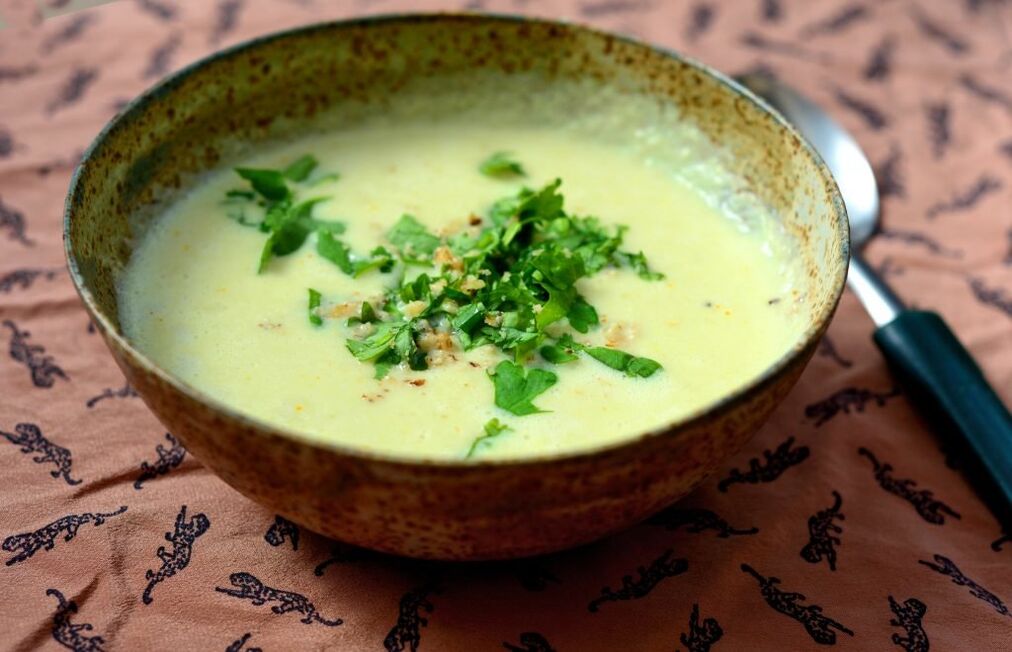
- cauliflower 0. 3 kg;
- hercules 50g;
- air 1l;
- two quail eggs;
- 100g liquid milk mixture;
- butter.
Boil cauliflower, rub the vegetables until puree. Cook oat rolls in vegetable broth for 10 minutes. Pour the cabbage puree, both eggs. The melted mixture and butter are added after boiling.
As the main dish of the hypoallergenic menu is not a general specialty, it is useful to eat turkey with buckwheat. Recipes consist of products in proportion, based on personal preference:
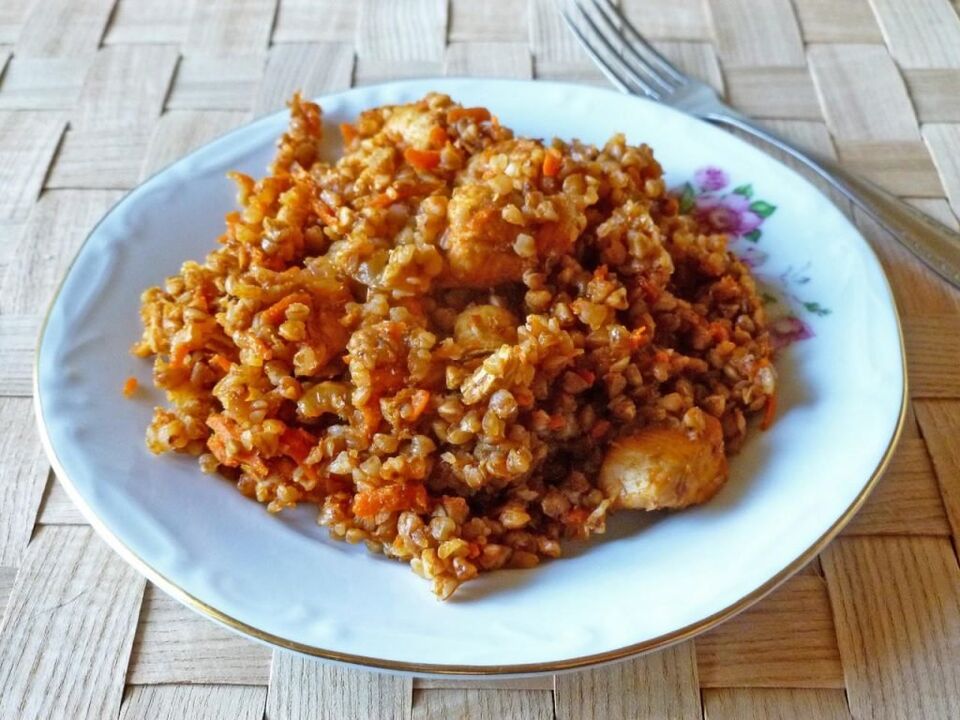
- turkey fillets;
- room;
- onion.
Let the buckwheat in boiling water for an hour. Boil turkey fillets, fry the prepared meat with onions. Mix the buckwheat with the meat mixture.
Vegetable Dinner Casserole:
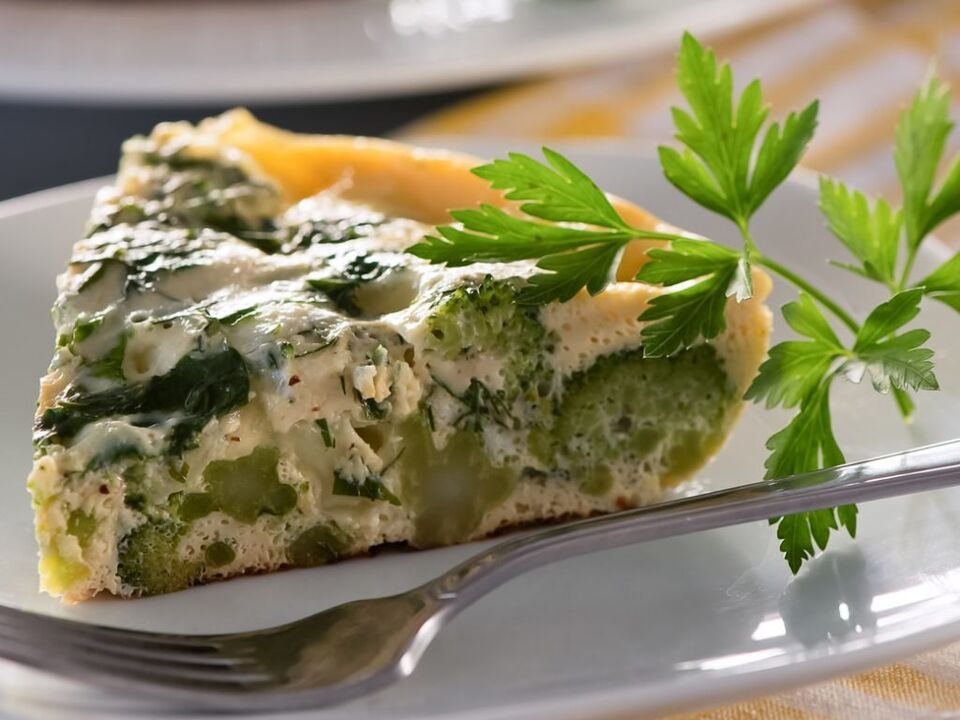
- 3-4 potatoes;
- broccoli 300g;
- cheese.
The number of recipe components can be varied according to taste preferences. Place the thinly sliced potatoes on the bottom of the mold, the next layer is broccoli, sprinkle with cheese. Bake in the oven at 180 degrees for 40 minutes.
For dessert, as part of a hypoallergenic diet, you can offer a recipe for a diet cake.
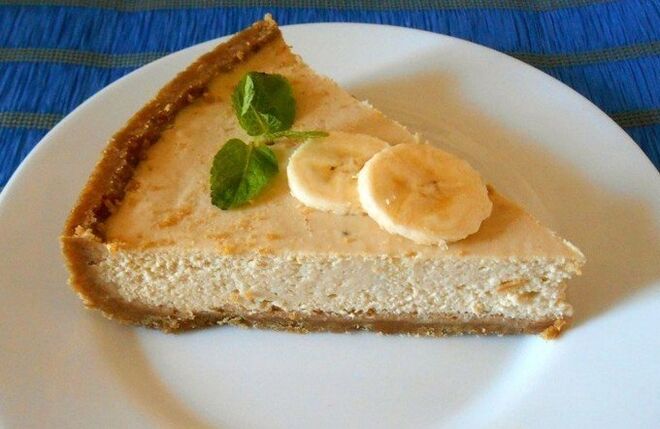
For cakes, ingredients that do not require baking are used:
- biscuit biscuits;
- cottage cheese;
- fruit puree (e. g. , apple sauce);
- bananas.
Layer the biscuits, cottage cheese and fruit puree batter in a blender, and add the banana slices.
Features of a hypoallergenic diet for children

Due to the peculiarity of the child's organism, hypoallergenic techniques have some nuances.
The diet for children takes into account restrictions on foods that are more likely to lead to allergies:
- eggs (especially yolks);
- cow's milk);
- chocolate, cocoa-based confectionery products;
- fish products;
- gluten;
- red fruits and vegetables;
- proteins found in rice, oats, wheat, bananas.
It is advisable to exclude from the menu products that are not natural for the area where the child lives. The pediatrician claims that avoiding exotic foods in the diet helps solve the problem of allergies in children.
Dietary rules for breastfeeding mothers

A hypoallergenic diet for breastfeeding mothers is the basis of nutrition during breastfeeding. The problem is that in the first years of life, babies may be allergic to any food, so nutrition should be strict, with the gradual introduction of new foods in very small quantities.
The need to use a diet according to hypoallergenic rules may arise when:
- the presence of allergies to various components in the diet of nursing mothers;
- the emergence of allergic reactions in children consuming breast milk of nursing mothers.
Nutrition for atopic dermatitis
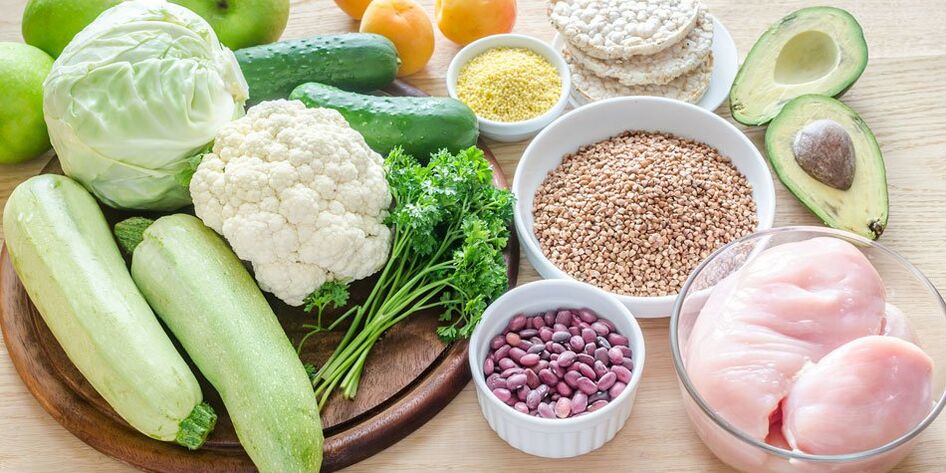
The presence of symptoms of atopic dermatitis is the basis for compliance with the rules of a hypoallergenic diet.
Before starting a diet with atopic dermatitis, you must:
- conduct analysis to identify the cause of atopic dermatitis;
- exclude the component completely from the diet if it is a source of dermatitis;
- With a hypoallergenic diet, you need to divide food into 5-6 servings per day.
For atopic dermatitis, the following list of products is allowed:
- dairy product;
- gluten -free cereals (buckwheat, rice, corn);
- green apples, preferably baked;
- dill, parsley;
- soaked boiled potatoes;
- black bread.
It is reasonable to exclude:
- yolk;
- honey;
- coffee, cocoa, chocolate;
- nuts;
- mustard;
- mushrooms;
- garlic;
- red and orange fruits, vegetables.
- fish and seafood.
When the symptoms of dermatitis subside, there is a gradual introduction of one of the excluded hypoallergenic products.































